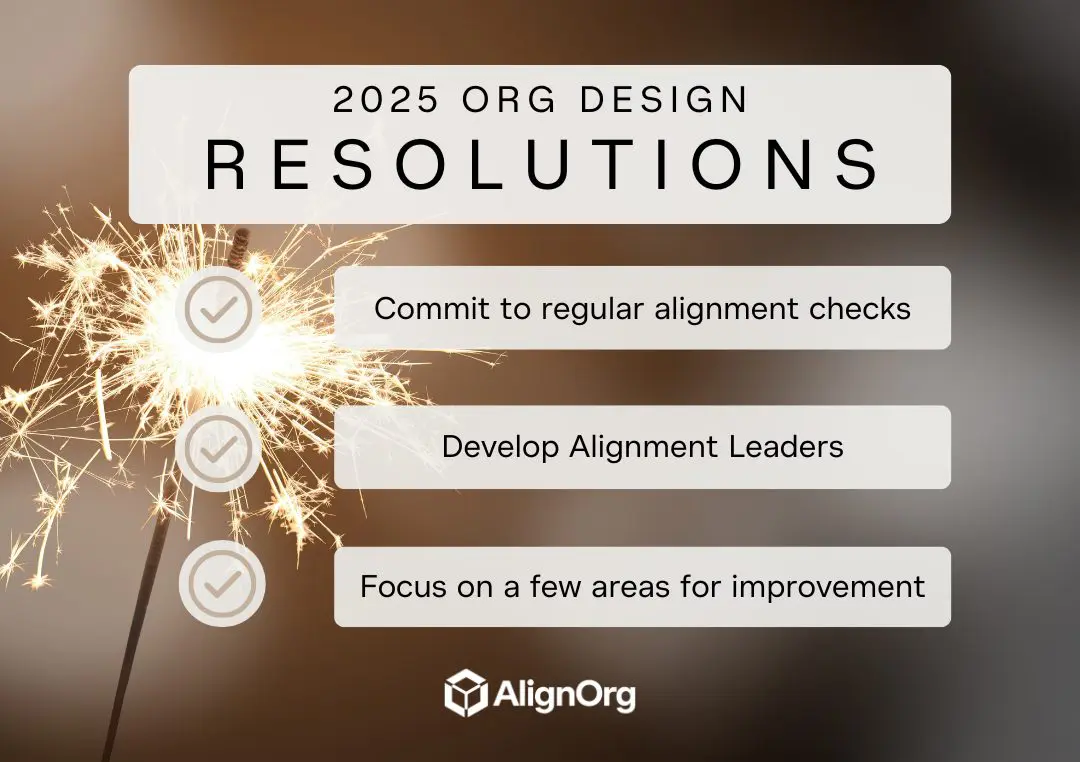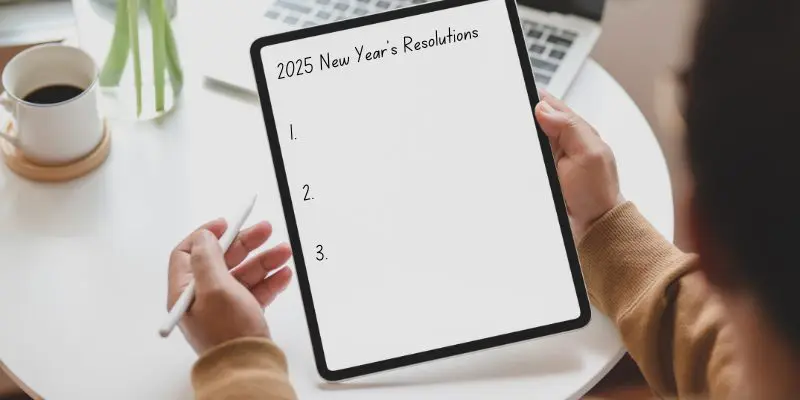As the calendar flips to a new year, it’s a great time for reflection, planning, and a refreshed approach to organizational design. Think of these resolutions as your guide to staying agile, forward-thinking, and aligned for the challenges ahead. Let’s dive in:
Perform Continuous Alignment Checks
Resolution: Make alignment a living, breathing process—not a “set it and forget it” task.
Too often, organizations fall into the trap of thinking alignment is a one-time event. A colleague once told me about an executive who balked at revisiting their division’s structure. “We just realigned two years ago,” they said. But the truth is, the pace of business today demands continuous evaluation and recalibration. What worked even a year ago may no longer fit today’s goals or realities.
Ask yourself:
- Does your structure still support your strategy?
- Are teams empowered to work across silos, or are old barriers creeping back in?
- Is decision-making happening at the right levels?
Commit to regular alignment check-ins—whether quarterly or biannually—using tools like an Organization Alignment Index (OAI) or structured workshops to ensure you’re always ready to pivot.
If you’ve already been tracking your OAI, the start of a new year is the perfect time to share insights with your team. Highlight what’s going well, where the organization has improved, and what needs further focus. This isn’t just about the data—it’s about using those insights to reignite a collective sense of purpose and alignment.
Build Leadership Team Capability to Be Stellar Alignment Leaders®
Resolution: Equip your leadership team with the skills to navigate and drive alignment.
Great alignment doesn’t happen by accident—it’s guided by leaders who know how to foster collaboration, prioritize effectively, and make tough trade-offs. Building this capability starts with defining what it means to be an “Alignment Leader.”
Key competencies of an Alignment Leader include:
- Strategic prioritization: The ability to balance immediate demands with long-term vision.
- Systemic thinking: Understanding how changes in one part of the organization impact others and ensuring that every aspect of organization aligns with its strategic goals.
- Facilitation skills: Leading cross-functional discussions that result in clarity and commitment. Alignment Leaders must be able to effectively communicate reasons for the change and “walk the talk” to encourage others to embrace a new way of working.
- Emotional intelligence: Navigating the human side of change—building trust, managing resistance, and sustaining morale.
- Building leadership skills in others: As we mention in our Alignment Leader guide, Alignment Leadership is a team effort. The more team members at all levels who begin to think and act like Alignment Leaders, the easier it will become to drive change.
Start with leadership assessments and tailored training programs to upskill your team. Regular alignment-focused leadership sessions can also reinforce these behaviors.
Stay Ahead of Future Talent Implications
Resolution: Choose 1–2 focus areas related to the future of work and engage your team in future-proofing.
The workplace is changing rapidly, with AI, automation, and dynamic resource scheduling transforming how we work. It’s easy to feel overwhelmed by the possibilities, but here’s the good news: you don’t need to tackle everything at once. Instead, pick 1–2 key areas to explore deeply this year.
For example:
- AI and automation: What skills will your workforce need as automation expands?
- Dynamic resource scheduling: How can you better align talent with fluctuating priorities?
To make this actionable, consider assigning your team a curated “future of work” reading list or hosting a TEDx-style learning session. Afterward, hold a debrief discussion with these questions:
- What did you learn that could impact our organization?
- What opportunities or risks do you see?
- What small experiment could we run this quarter to explore further?

Resolve to Thrive in 2025
New Year’s resolutions for org design aren’t just about fixing what’s broken—they’re about creating a culture of continuous improvement, adaptability, and forward momentum. By committing to these resolutions, you’ll position your organization to thrive in the year ahead and beyond. Which one will you tackle first?
